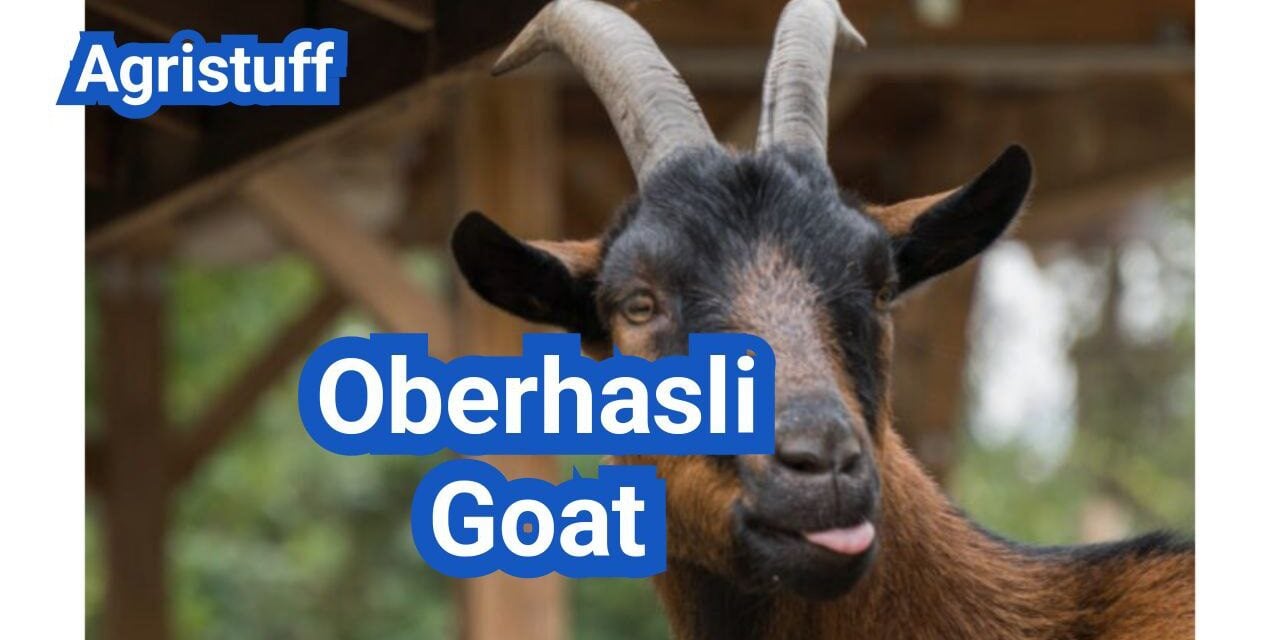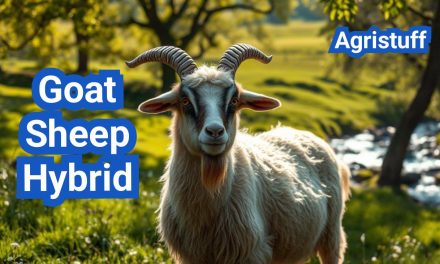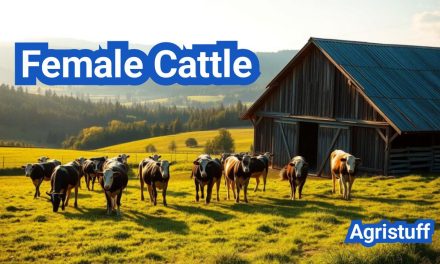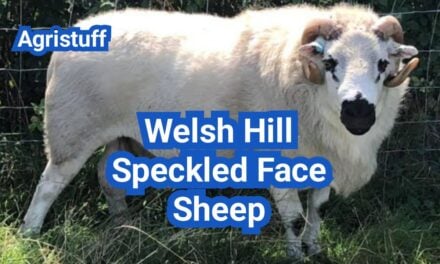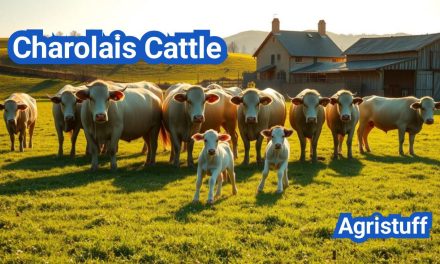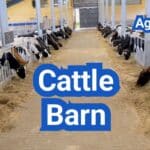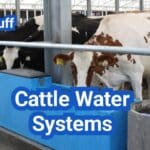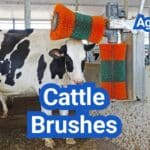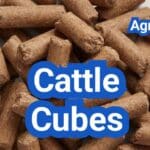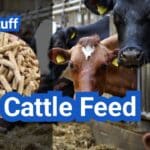The Oberhasli goat is a modern American breed of dairy goat that originated from the Oberhasli district of the Bernese Oberland in Switzerland.
This breed is known for its exceptional dairy production and sturdy pack animal capabilities. The Oberhasli goat’s rich history and distinctive characteristics have been developed over the years.
Originating from the Swiss Alps, this dairy goat breed has been refined for its unique features.
Key Takeaways
- A modern American breed with Swiss origins
- Exceptional dairy production capabilities
- Sturdy pack animal characteristics
- Rich history and distinctive breed features
- Originated from the Bernese Oberland region
The Swiss Heritage of Oberhasli Goats
The Oberhasli goat breed has a rich history that traces back to the picturesque Oberhasli district in the Bernese Oberland of Switzerland. This region, known for its breathtaking landscapes and robust dairy farming traditions, has played a crucial role in shaping the breed.
Origin in the Oberhasli District of Switzerland
The Oberhasli goat originated in the Oberhasli district, where it was developed as a dairy breed to thrive in the local climate and terrain. The breed’s development is closely tied to the region’s agricultural practices and the need for high-quality milk production.
Key Characteristics: The Oberhasli goat is known for its distinctive chamoisée color pattern and robust build, traits that have been honed through generations of selective breeding in the Swiss Alps.
Historical Development of the Breed
The historical development of the Oberhasli goat is a testament to the ingenuity of Swiss dairy farmers. Over the centuries, they have carefully bred the goats to enhance their milk production capabilities while ensuring they remained hardy and adaptable to the mountainous terrain.
| Year | Significant Event | Impact on the Breed |
|---|---|---|
| Early 20th Century | Initial Breed Development | Established the foundation for the modern Oberhasli goat. |
| Mid-20th Century | Selective Breeding Programs | Enhanced milk production and breed characteristics. |
| Late 20th Century | Export to Other Countries | Introduced the Oberhasli goat to new markets and farming communities. |
The Oberhasli goat’s heritage is a rich tapestry woven from the threads of tradition, innovation, and a deep connection to the land. Understanding this history is essential to appreciating the breed’s unique qualities and its potential in modern dairy farming.
Oberhasli Goats in the United States
Oberhasli goats made their debut in America during the early 1900s, paving the way for their popularity in dairy goat breeding. The introduction of this breed to the U.S. marked the beginning of a new era in dairy goat farming.
Introduction to America
The early 20th century saw a significant influx of Oberhasli goats into the United States. This period was crucial for the breed’s establishment, as it allowed breeders to adapt the goats to the local climate and farming practices. The Oberhasli goat’s hardiness and dairy production capabilities made it an attractive choice for American dairy goat breeders.
As the breed gained popularity, it became necessary to establish a formal registry and breed association. This led to the involvement of the American Dairy Goat Association (ADGA), which played a pivotal role in the breed’s development and recognition in the U.S.
Development and Recognition by the American Dairy Goat Association
The ADGA, established in 1904, is one of the oldest dairy goat breed associations in the United States. The association’s primary role is to promote and improve dairy goat breeds, including the Oberhasli. In 1979, the ADGA officially recognized the Oberhasli breed, providing it with a registry and a set of breed standards.
The recognition by the ADGA was a significant milestone for the Oberhasli breed in the U.S. It not only legitimized the breed but also provided breeders with a framework for breeding and showing Oberhasli goats. The ADGA’s breed standards have been instrumental in maintaining the breed’s integrity and promoting its dairy production capabilities.
Today, the Oberhasli goat is a respected and popular dairy breed in the United States, thanks in part to the efforts of the ADGA. The breed’s distinctive Chamoisée color pattern and high milk production make it a favorite among dairy goat enthusiasts.
Understanding the Oberhasli Goat Breed

With its striking appearance and robust build, the Oberhasli goat is a standout in the world of dairy goats. This breed is characterized by several distinct features that make it a popular choice among dairy goat enthusiasts.
Distinctive Chamoisée Color Pattern
The Oberhasli goat is known for its chamoisée color pattern, which is a bay or reddish-brown coat color with black markings on the head, dorsal stripe, and legs. This distinctive coloring is a key identifier of the breed and is highly prized by breeders and judges alike.
Size and Weight Standards
Oberhasli goats are of medium size, with does typically weighing between 100 and 150 pounds, while bucks can weigh between 125 and 200 pounds. The breed’s size and weight standards are important factors in its overall conformation and dairy production capabilities.
- Does: 100-150 pounds
- Bucks: 125-200 pounds
Physical Appearance and Conformation
The physical appearance of Oberhasli goats is characterized by their alert and robust build. They have a sturdy conformation that is well-suited to their dairy production role. Key aspects of their physical appearance include:
- A strong, straight or slightly convex profile
- Erect ears
- A muscular neck and well-sprung ribs
- A well-attached udder in does
Overall, the Oberhasli goat’s unique combination of characteristics makes it an attractive choice for dairy farming and a valuable addition to any dairy goat operation.
Temperament and Behavior of Oberhasli Goats
Oberhasli goats exhibit a unique blend of intelligence, curiosity, and friendliness, setting them apart from other breeds. Their temperament is a crucial aspect of their appeal, making them suitable for various agricultural purposes.
Personality Traits
Oberhasli goats are known for their friendly and gentle disposition. They are highly intelligent and curious, often displaying a playful nature that makes them enjoyable to be around. Their calm demeanor also makes them an excellent choice for dairy farming.
Key Personality Traits:
- Friendly and sociable
- Intelligent and curious
- Gentle and calm
- Playful and engaging
Social Behavior with Other Animals
Oberhasli goats are social animals that thrive in the company of other goats and animals. They are known to form close bonds with their herd members and can be quite interactive. When introduced properly, they generally get along well with other livestock.
| Social Behavior Aspect | Description |
|---|---|
| Herd Dynamics | Oberhasli goats integrate well into existing herds, showing a natural inclination towards social interaction. |
| Interaction with Other Livestock | They are generally compatible with other farm animals, provided introductions are managed carefully. |
| Human Interaction | Oberhasli goats are known to be friendly towards humans, often seeking interaction and affection. |
Handling and Training Considerations
The friendly nature of Oberhasli goats makes them relatively easy to handle and train. They respond well to positive reinforcement and consistent training practices. Early socialization and gentle handling are key to developing well-behaved and well-adjusted goats.
Training Tips:
- Use positive reinforcement techniques
- Be consistent in training practices
- Socialize goats from an early age
- Handle goats gently and carefully
Oberhasli Goat Breed Standards

The American Dairy Goat Association (ADGA) provides comprehensive breed standards for Oberhasli goats, covering aspects such as size, weight, and physical appearance. These standards are crucial for maintaining the breed’s integrity and excellence.
American Dairy Goat Association Standards
The ADGA sets the breed standards for Oberhasli goats, including their size, weight, and physical characteristics. According to the ADGA, the breed should exhibit a distinctive Chamoisée color pattern, among other characteristics.
| Characteristic | Male | Female |
|---|---|---|
| Weight (lbs) | 100-150 | 75-120 |
| Height (inches) | 30-34 | 28-32 |
| Coat Color | Chamoisée (distinctive bay or brown color) |
Judging Criteria for Shows
When judging Oberhasli goats at shows, several criteria are considered, including conformation, breed characteristics, and overall health. Judges evaluate the goats based on how closely they adhere to the breed standards set by the ADGA.
Key Judging Criteria:
- Conformation and physical appearance
- Breed characteristics, including coat color and pattern
- Overall health and condition
Disqualifications and Faults
Certain characteristics or conditions can lead to disqualification or be considered faults in Oberhasli goats. These include deviations from the breed standards, such as incorrect coat color, improper conformation, or signs of poor health.
Common Disqualifications:
- Incorrect or inconsistent coat color
- Poor conformation or structural issues
- Signs of illness or poor health
Understanding these breed standards and judging criteria is essential for breeders and exhibitors to ensure their Oberhasli goats meet the expected characteristics and to maintain the breed’s excellence.
Dairy Production of Oberhasli Goats
The Oberhasli goat breed is renowned for its impressive dairy production capabilities. Oberhasli goats are known for their high milk production, rich milk composition, and long lactation cycles, making them an excellent choice for dairy farming.
Milk Production Quantities
Oberhasli goats are prolific milk producers, with some does producing up to 2,000 pounds of milk per year. The average milk production can vary based on factors such as diet, management practices, and genetics. Proper nutrition and care can significantly impact the overall milk yield.
Milk Composition and Taste
The milk of Oberhasli goats is not only abundant but also of high quality. It is rich in butterfat and protein, making it ideal for cheese production and other dairy products. The taste of the milk is often described as rich and creamy, which is attributed to the breed’s genetic makeup and diet.
Lactation Cycles and Duration
Oberhasli goats have a relatively long lactation period, typically lasting around 10 months. The lactation cycle can be influenced by factors such as breeding practices, nutrition, and the overall health of the doe. A well-managed lactation cycle is crucial for maintaining high milk production levels.
Setting Up a Milking Station
Establishing an efficient milking station is essential for dairy goat farming. The milking station should be designed to minimize stress on the animals and maximize milk production. Key considerations include proper sanitation, comfortable milking stalls, and effective milking equipment. A well-designed milking station can significantly improve the overall dairy production process.
How to Use Oberhasli Goats as Pack Animals

With proper training, Oberhasli goats can become reliable pack animals for trekking and hiking adventures. Their strength, endurance, and gentle nature make them an excellent choice for packing.
Pack Training Methods
Training an Oberhasli goat for packing involves patience, consistency, and positive reinforcement. Start by getting your goat accustomed to wearing a halter and gradually introduce the pack saddle. It’s essential to begin with light loads and gradually increase the weight as the goat becomes more comfortable and confident.
- Introduce the pack saddle gradually, allowing the goat to get used to its presence and weight.
- Start with short training sessions and gradually increase the duration.
- Use positive reinforcement techniques, such as treats and praise, to encourage good behavior.
As noted by experienced packers, “The key to successful pack training is gradual acclimation and consistent positive reinforcement.” This approach not only helps in building trust between the goat and the handler but also ensures that the goat remains calm and cooperative under load.
Weight Carrying Capacity
The weight carrying capacity of an Oberhasli goat depends on its size, strength, and conditioning. Generally, a well-conditioned Oberhasli goat can carry between 25 to 30 pounds (approximately 11 to 14 kg), which is about 20-25% of its body weight.
| Goat Weight | Pack Weight |
|---|---|
| 100-120 pounds | 25-30 pounds |
| 120-140 pounds | 30-35 pounds |
It’s crucial not to overload your goat, as this can lead to discomfort, injury, or long-term health issues. Always assess your goat’s condition and adjust the pack weight accordingly.
Trail Behavior and Endurance
Oberhasli goats are known for their endurance and sure-footedness on trails. They are generally calm and can navigate challenging terrain with ease. However, their trail behavior can be influenced by their training, handling, and the presence of companions.
To maximize their endurance, ensure your Oberhasli goats are well-conditioned through regular exercise and proper nutrition. Monitoring their health and adjusting their workload as needed is also crucial for successful packing adventures.
Setting Up Housing for Oberhasli Goats

Oberhasli goats require well-designed housing to thrive on any farm or homestead. Adequate housing protects them from harsh weather conditions and predators, ensuring their overall health and productivity.
Shelter Design and Space Needs
The shelter for Oberhasli goats should be designed with their comfort and safety in mind. A well-ventilated area with adequate space is crucial. The recommended space per goat is at least 15 square feet inside the shelter.
Key Considerations for Shelter Design:
- Protection from wind, rain, and extreme temperatures
- Adequate ventilation to prevent respiratory issues
- Enough space for all goats to stand, turn around, and lie down comfortably
Fencing Considerations
Fencing is a critical aspect of housing Oberhasli goats, as it keeps them safe and contained. The fence should be at least 5 feet tall to prevent jumping.
| Fencing Type | Height | Durability |
|---|---|---|
| Wooden Fencing | 5-6 feet | High |
| Metal Fencing | 5 feet | Very High |
| Electric Fencing | 4-5 feet | Medium to High |
Bedding and Cleaning Routines
Bedding is essential for keeping the shelter clean and dry. Common bedding materials include straw, hay, and wood shavings. Regular cleaning routines are necessary to maintain hygiene and prevent health issues.
Bedding Material Comparison:
- Straw: Absorbent, comfortable for goats
- Hay: Can be used but may be eaten by goats
- Wood Shavings: Highly absorbent, reduces odor
By focusing on these aspects of housing, you can create a healthy and comfortable environment for your Oberhasli goats.
Feeding and Nutrition Guide for Oberhasli Goats

Oberhasli goats require a nutritious diet that includes grazing, browsing, and supplemental feeding to thrive. A well-balanced diet is essential for maintaining their overall health and optimizing their dairy production.
Daily Dietary Requirements
The daily dietary requirements for Oberhasli goats vary based on their age, size, and level of production. Generally, they need a diet rich in fiber and moderate in protein. A mix of high-quality hay, grains, and minerals is recommended.
- High-quality hay: Timothy hay or other grass hays are ideal.
- Grains: A mix of oats, barley, and corn can be used, but should be limited to avoid overfeeding.
- Minerals: Ensure access to a mineral block or loose minerals specifically formulated for goats.
Grazing and Browsing Needs
Oberhasli goats are browsers and need access to a variety of plants for grazing and browsing. Providing a mix of grasses, shrubs, and trees can help meet their nutritional needs and keep them healthy.
Grazing and browsing not only provide essential nutrients but also help to keep the goats’ digestive system healthy.
Supplemental Feeding Guidelines
Supplemental feeding is necessary, especially during periods when grazing is limited or when the goats are in heavy production. The type and amount of supplemental feed will depend on the quality of the available forage and the goats’ nutritional needs.
Key considerations for supplemental feeding:
- Quality of forage: Analyze the nutritional content of the available forage to determine the need for supplements.
- Production level: Goats in heavy milk production may require additional supplements to maintain their health and productivity.
Water Requirements
Access to clean, fresh water is crucial for the health of Oberhasli goats. Water intake can vary based on factors such as temperature, humidity, and level of production.
Ensuring adequate water supply:
- Check water quality regularly to ensure it is safe for consumption.
- Provide multiple water sources to prevent competition and ensure all goats have access.
Managing the Health of Your Oberhasli Goats

Ensuring the health of your Oberhasli goats involves understanding their specific needs and potential health challenges. The Oberhasli breed is generally hardy, but like all goats, they can be susceptible to certain health issues.
Common Health Issues
Oberhasli goats can be prone to parasites and hoof problems, among other health concerns. Parasites such as worms can significantly affect their health, leading to weight loss and decreased milk production. Regular monitoring and appropriate treatment are crucial.
- Internal parasites (worms)
- External parasites (ticks, lice)
- Hoof problems (hoof rot, abscesses)
Hoof care is particularly important as issues like hoof rot can cause significant discomfort and impact mobility. Regular trimming and inspection can help prevent these problems.
Preventative Care Schedule
A preventative care schedule is vital for maintaining the health of your Oberhasli goats. This includes:
- Regular vaccinations
- Parasite control measures
- Hoof trimming and care
- Dental care
Working with a veterinarian experienced in goat care can help tailor a preventative care program to your specific needs.
Finding a Goat-Experienced Veterinarian
Not all veterinarians have experience with goats, so it’s crucial to find one who is knowledgeable about goat health. Ask for recommendations from other goat breeders or check with local agricultural organizations.
Emergency Health Situations
Being prepared for emergency health situations is essential. Keep a first aid kit on hand and know the signs of serious health issues, such as difficulty breathing, severe injury, or signs of poisoning.
Having a plan in place for emergency situations can make a significant difference in the outcome for your goats.
Breeding and Reproduction of Oberhasli Goats

Oberhasli goats are seasonal breeders, and their breeding and reproduction processes are crucial for dairy farmers to understand. The breed’s reproductive cycle is influenced by the decreasing daylight hours, typically triggering the breeding season in the fall.
Breeding Age and Season
Oberhasli does typically reach breeding age between 6 to 12 months, although it’s often recommended to wait until they are about 70-80 pounds or around 1 year of age before breeding. The breeding season usually starts in late summer to early fall, with the does cycling every 18-24 days until they become pregnant.
Gestation and Kidding
The gestation period for Oberhasli goats is approximately 150 days. During this time, proper nutrition is crucial to support the health of both the doe and the developing kids. Kidding typically occurs in the spring, and it’s essential to monitor the does closely as they prepare to give birth.
Oberhasli kids are usually born with minimal assistance, but it’s crucial to have a clean and safe environment for kidding to prevent complications.
Kid Care and Management
After birth, kids are weighed and monitored for health issues. They are typically given a small amount of colostrum within the first hour of birth to provide them with essential antibodies. The navel is disinfected to prevent infection.
Kids are usually weaned at around 8-10 weeks of age, although this can vary depending on the farm’s management practices.
Breeding for Improvement
Selective breeding is used to improve the quality and productivity of the Oberhasli herd. Breeders consider factors such as milk production, temperament, and conformation when selecting does and bucks for breeding.
Record-keeping is essential to track the lineage, health, and productivity of the goats, helping breeders make informed decisions.
| Breeding Aspect | Details |
|---|---|
| Breeding Age | 6-12 months, ideally around 1 year |
| Breeding Season | Late summer to early fall |
| Gestation Period | Approximately 150 days |
| Kid Weaning Age | 8-10 weeks |
Mini Oberhasli Goats: A Smaller Alternative

For those looking for a smaller dairy goat, the Mini Oberhasli is an excellent choice, combining the benefits of the Oberhasli breed in a more compact form. The Mini Oberhasli goat is a unique and versatile breed that offers the advantages of the standard Oberhasli in a smaller package.
Development of the Mini Oberhasli
The Mini Oberhasli goat breed was developed to retain the desirable traits of the standard Oberhasli, such as its dairy production capabilities and temperament, but in a smaller size. This was achieved through selective breeding programs that focused on reducing the size while maintaining the breed’s characteristic features.
Key characteristics of the Mini Oberhasli include its compact body, efficient dairy production, and friendly disposition. These goats are ideal for smaller farms or homesteads where space is limited but dairy production is still a priority.
Characteristics and Uses
Mini Oberhasli goats are known for their distinctive Chamoisée color pattern and robust dairy production. They are used primarily for dairy purposes, providing high-quality milk that is rich in butterfat and protein.
- Efficient dairy production
- Compact size ideal for smaller spaces
- Friendly and manageable temperament
These characteristics make the Mini Oberhasli an attractive option for dairy enthusiasts who have limited space but are looking for a breed that can provide a substantial amount of milk.
Care Differences from Standard Oberhasli
While the care requirements for Mini Oberhasli goats are similar to those of the standard Oberhasli, there are some differences due to their smaller size. Mini Oberhaslis require less feed and space, making them more manageable on smaller farms.
| Care Aspect | Mini Oberhasli | Standard Oberhasli |
|---|---|---|
| Feed Requirements | Less feed due to smaller size | More feed required |
| Space Needs | Less space required | More space needed |
Understanding these care differences is crucial for the successful management of Mini Oberhasli goats, ensuring they receive the appropriate care tailored to their specific needs.
Comparing Oberhasli Goats to Other Dairy Breeds

The Oberhasli goat, known for its distinctive color and robust milk production, is often compared to other dairy breeds like the Alpine goat. This comparison is crucial for dairy farmers to determine the most suitable breed for their operations.
Oberhasli vs. Alpine Goats
Oberhasli and Alpine goats share some similarities but also have distinct differences. Oberhasli goats are known for their rich, creamy milk, while Alpine goats are often praised for their high milk production volume.
A key comparison between the two breeds can be seen in their milk production capabilities and temperament. The following table highlights some of the main differences:
| Characteristics | Oberhasli Goats | Alpine Goats |
|---|---|---|
| Milk Production (average lbs/year) | 1,000-1,200 | 1,200-1,500 |
| Temperament | Gentle, Curious | Active, Hardy |
| Hardiness | Adaptable | Very Hardy |
Advantages Over Other Swiss Breeds
Oberhasli goats have several advantages over other Swiss dairy breeds. Their distinctive Chamoisée color pattern and robust health make them a popular choice among dairy farmers. Additionally, their milk is renowned for its quality, making it ideal for cheese production.
Choosing the Right Breed for Your Needs
When deciding on a dairy goat breed, several factors should be considered, including milk production needs, farm conditions, and personal preference. Oberhasli goats are an excellent choice for farmers seeking a balance between milk quality and quantity.
Ultimately, the choice between Oberhasli goats and other dairy breeds depends on the specific requirements of your dairy operation. By comparing the characteristics and advantages of different breeds, farmers can make informed decisions to optimize their dairy farming practices.
How to Get Started with Oberhasli Goats
Getting started with Oberhasli goats requires a thorough understanding of the breed and its needs. This knowledge will help you make informed decisions when setting up your farm.
Finding Reputable Breeders
The first step in starting your Oberhasli goat farm is to find reputable breeders. Look for breeders who are registered with national or local dairy goat associations, such as the American Dairy Goat Association (ADGA). These organizations often have directories of breeders who follow specific breeding standards.
Reliable breeders can provide healthy animals and valuable advice on caring for your goats. They can also offer insights into the breed’s characteristics and help you select goats that fit your farm’s needs.
Cost Considerations
Understanding the costs involved is crucial when starting an Oberhasli goat farm. The initial investment includes purchasing goats, building or renovating housing, and buying equipment. Ongoing expenses include feed, veterinary care, and supplies.
It’s essential to create a detailed budget that accounts for both initial and ongoing costs. This will help you manage your finances effectively and ensure the sustainability of your farm.
What to Look for When Purchasing
When purchasing Oberhasli goats, look for animals that are healthy and well-cared for. Check for signs of illness or stress, and ensure the goats have been properly vaccinated and parasite-controlled.
Consider the breed characteristics and ensure they align with your farm’s goals. Whether you’re focusing on dairy production or another use, selecting the right goats is vital.
Starting Herd Size Recommendations
Deciding on the initial herd size depends on several factors, including your available resources, experience, and goals. For beginners, starting with a small herd can be less overwhelming and more manageable.
A small initial herd allows you to gain experience and build your operation gradually. It’s also a good strategy for managing costs and ensuring you can provide adequate care for your goats.
Is the Oberhasli Goat Right for Your Farm?
The Oberhasli goat is a unique and versatile breed that can be an excellent addition to a farm or agricultural operation. When considering adding Oberhasli goats to your farm, it’s essential to evaluate their suitability based on your specific needs and circumstances.
Oberhasli goat suitability depends on various farm considerations, including the size of your operation, your experience with dairy goats, and your ability to provide the necessary care and management. The breed advantages of Oberhasli goats, such as their high milk production, friendly temperament, and adaptability, make them an attractive choice for many farmers.
To determine if the Oberhasli goat is right for your farm, consider factors such as your available land, fencing, and feeding options. You should also research local regulations and market demand for dairy products. By carefully evaluating these factors and understanding the needs and advantages of the Oberhasli breed, you can make an informed decision about whether this breed is a good fit for your agricultural operation.
FAQ
What is the origin of the Oberhasli goat breed?
The Oberhasli goat breed originates from the Swiss Alps, specifically from the Oberhasli district of the Bernese Oberland.
What are the distinctive characteristics of the Oberhasli goat breed?
The Oberhasli goat is known for its chamoisée color pattern, medium size, sturdy build, and friendly temperament.
How much milk do Oberhasli goats produce?
Oberhasli goats are known for their high milk production, with an average production of around 1,000-1,200 kg per lactation cycle.
Can Oberhasli goats be used as pack animals?
Yes, Oberhasli goats are versatile and can be used as pack animals due to their strength, endurance, and gentle nature.
What are the housing requirements for Oberhasli goats?
Oberhasli goats require shelter, fencing, and bedding that meet their specific needs, including protection from the elements and adequate space to move around.
What are the nutritional needs of Oberhasli goats?
Oberhasli goats require a balanced diet that includes grazing, browsing, and supplemental feeding, as well as access to clean water.
How often do Oberhasli goats breed?
Oberhasli goats are seasonal breeders, typically breeding in the fall, with a gestation period of around 150 days.
What are the advantages of the Mini Oberhasli goat breed?
The Mini Oberhasli goat offers the advantages of the standard Oberhasli in a smaller package, making it suitable for smaller farms or homesteads.
How do Oberhasli goats compare to other dairy breeds?
Oberhasli goats offer unique characteristics and advantages compared to other dairy breeds, including their high milk production, rich milk composition, and friendly temperament.
What should I consider when getting started with Oberhasli goats?
When getting started with Oberhasli goats, consider finding reputable breeders, understanding costs, and knowing what to look for when purchasing, as well as starting herd size recommendations.
Are Oberhasli goats friendly?
Yes, Oberhasli goats are known for their friendly and gentle nature, making them an excellent choice for dairy farming and other agricultural purposes.
What is the lifespan of an Oberhasli goat?
The average lifespan of an Oberhasli goat is around 10-12 years, depending on factors such as nutrition, health, and living conditions.
Can Oberhasli goats be used for meat production?
While Oberhasli goats are primarily used for dairy production, they can also be used for meat production, although they are not as commonly used for this purpose.
Conclusion of: Oberhasli Goat Breed
Introduction: Why the Oberhasli Goat Attracts U.S. Farmers
The Oberhasli Goat is a Swiss dairy breed that has quietly earned a loyal following among small farmers and homesteaders in the United States. Known for its rich mahogany coat with black markings, medium size, and calm personality, the Oberhasli Goat offers a balance of milk production, easy handling, and eye-catching looks.
For many beginners who feel intimidated by very large dairy animals, the Oberhasli Goat provides an accessible way to explore home-scale dairying, cheese making, and even agritourism, while still fitting comfortably on a few acres or a mixed-livestock homestead. Oberhasli goat breed overview – Wikipedia
History and Origin of the Oberhasli Goat
The story of the Oberhasli Goat begins in the Swiss Alps, particularly the Oberhasli district of the Bernese Oberland, where local shepherds selected hardy dairy goats that could thrive on steep mountain pastures. This alpine type, closely related to the Chamois Colored Goat of Switzerland, was prized for dependable milk production, strong feet, and the ability to handle cold, wet conditions. In the early 1900s, the Oberhasli Goat was imported into the United States, but for decades it was grouped under the broader “Swiss Alpine” label, which blurred its unique identity.
Only in the late twentieth century did U.S. breed registries formally recognize the Oberhasli Goat as a distinct dairy breed, thanks to dedicated breeders who carefully recorded pedigrees and promoted the breed’s special characteristics. Oberhasli goat history – The Livestock Conservancy
Physical Characteristics and Breed Standards of the Oberhasli Goat
One of the first things people notice about the Oberhasli Goat is its striking coat color, called chamoisée, which combines a deep bay or reddish-brown body with black markings. A typical Oberhasli Goat has a black dorsal stripe running down the back, black belly, and black lower legs, along with two black facial stripes from the eyes to the muzzle.
Does may also appear in solid black, but purebred bucks must show the traditional bay chamoisée pattern to meet breed standards. Beyond color, the Oberhasli Goat is a medium-sized dairy animal, with does usually weighing around 120–150 pounds and bucks 150–175 pounds, giving them enough substance to be productive without being overwhelming to handle. Upright ears, a straight or slightly dished face, and an overall well-balanced frame give the Oberhasli Goat an alert yet gentle look that many families find appealing. Physical description of the Oberhasli goat – Zoo Atlanta
Temperament and Behavior of the Oberhasli Goat
A major reason the Oberhasli Goat has become so popular with homesteaders is its temperament. Owners often describe the Oberhasli Goat as calm, friendly, and people-oriented, making daily chores and milking more pleasant. Compared with some higher-strung dairy breeds, the Oberhasli Goat tends to be quieter and less prone to constant vocalizing, which can be a big benefit for neighbors and on small properties.
Their steady nature also makes the Oberhasli Goat a favorite in youth programs and 4-H projects, where children need animals that are responsive but not overly reactive. At the same time, this breed retains enough curiosity and energy to enjoy exploring pastures, climbing rocks, and learning new routines, so life with an Oberhasli Goat remains engaging rather than dull. Oberhasli goat temperament and behavior – WNC Nature Center
Milk Production and Quality of the Oberhasli Goat
From a production standpoint, the Oberhasli Goat is a solid, reliable dairy breed that fits well into many U.S. family and small-farm systems. While it may not always match the extreme yields of the highest-producing Alpine or Saanen lines, the Oberhasli Goat typically offers very respectable lactation totals, often around 1,600–2,000 pounds of milk per year under good management. Many Oberhasli Goat herds report even higher records in official testing programs when nutrition and genetics are optimized.
Just as important as volume is the quality of the milk: Oberhasli Goat milk usually has butterfat levels in the mid-3% range, with good protein content, making it suitable for drinking, yogurt, and a wide variety of cheeses. Many families also remark that milk from the Oberhasli Goat has a naturally sweet, mild flavor that can help new goat-milk drinkers overcome any hesitation. Dairy goat breeds and milk traits – Cornell Small Ruminant Extension
Main Uses of the Oberhasli Goat on U.S. Farms and Homesteads
Although the Oberhasli Goat is primarily a dairy breed, its usefulness on a U.S. farm often extends well beyond the milk pail. A well-managed Oberhasli Goat doe can supply all the milk a household needs for fresh use, plus extra for cheese, ice cream, or soap making, with surplus kids providing either meat or breeding-stock sales.
Because of their sure-footedness and medium frame, wethers and some does of the Oberhasli Goat are also used as pack goats, carrying camping gear on backcountry trips or helping with chores on hilly terrain. Their attractive coloration and friendly nature make the Oberhasli Goat a favorite in agritourism settings, petting zoos, and farm tours, where visitors appreciate a calm animal that is still visually distinctive. In integrated grazing systems, the Oberhasli Goat can help control brush and weeds while adding manure to fields, contributing to healthier pastures and soil. Using goats on homesteads and small farms – MOFGA
Breeding and Reproduction Management in Oberhasli Goat Herds
Good breeding management is essential for keeping an Oberhasli Goat herd healthy and productive over the long term. Like many temperate dairy breeds, the Oberhasli Goat tends to be seasonally polyestrous, meaning that does come into heat in the fall as days grow shorter, with most kids born in late winter or spring after a gestation of about 150 days.
Careful recordkeeping allows you to match each Oberhasli Goat doe with a buck that improves traits such as udder structure, milk production, feet and legs, and temperament. Many breeders of the Oberhasli Goat use tools such as linear appraisal, milk testing programs, and pedigree research to guide their mating decisions. Planning ahead for kidding season, including preparing clean pens, having basic supplies on hand, and scheduling pre-kidding vaccinations, helps every Oberhasli Goat doe and kid get off to a strong start. Reproductive management for dairy goats – Alabama Cooperative Extension
Feeding and Nutrition Requirements of the Oberhasli Goat
Because it is a genuine dairy breed, the Oberhasli Goat depends on good nutrition to reach its potential. In most U.S. systems, a productive Oberhasli Goat doe thrives on a diet built around quality forage—such as mixed grass–legume hay or well-managed pasture—supplemented with a balanced grain ration during late pregnancy and peak lactation.
Clean, fresh water and free-choice loose minerals formulated specifically for goats are essential for any Oberhasli Goat herd, especially in regions where soils lack copper, selenium, or other trace elements. Body condition scoring throughout the year helps you adjust feed so each Oberhasli Goat maintains a healthy weight instead of becoming too thin or overly fat. Rotational grazing, browsing brushy areas, and avoiding sudden ration changes all support a healthy rumen, allowing the Oberhasli Goat to convert forage efficiently into milk. Dairy goat production and feeding – Penn State Extension
Housing, Fencing, and Daily Management of the Oberhasli Goat
Housing for the Oberhasli Goat does not need to be elaborate, but it must provide shelter from wind, rain, and extreme sun while keeping bedding dry and relatively clean. A simple three-sided shed or small barn with good ventilation and plenty of space for each Oberhasli Goat is often sufficient, as long as doors, latches, and gates are sturdy enough to resist curious goats.
Because goats are agile and persistent, strong fencing is critical; woven wire, cattle panels, or well-built high-tensile electric setups usually do a good job of containing an Oberhasli Goat herd. Daily routines such as regular milking times, consistent feeding schedules, and calm handling help the Oberhasli Goat feel secure and cooperative. Providing clean milking areas, safe kidding pens, and shaded loafing spots ensures that each Oberhasli Goat can perform well across different seasons and climates. Goat facilities and housing – Goats.Extension.org
Health, Parasites, and Preventive Care for the Oberhasli Goat
The Oberhasli Goat is generally hardy, but it faces the same health challenges as other dairy goats, including internal parasites, external parasites, foot problems, respiratory issues, and udder infections. A good preventive program starts with regular fecal testing and targeted deworming based on veterinary guidance so that parasites do not become resistant and the Oberhasli Goat does not suffer unnecessary drug exposure.
Routine hoof trimming, vaccination for core diseases such as clostridial infections and tetanus, and prompt attention to injuries or sudden behavior changes all play an important role in Oberhasli Goat health. Clean, dry bedding and sanitary milking practices help protect the udder of each Oberhasli Goat, reducing the risk of mastitis and improving milk quality. Building a relationship with a goat-experienced veterinarian gives you expert backup when an Oberhasli Goat becomes ill or when you need help designing a herd health plan. Common diseases of dairy goats – Alabama Cooperative Extension
Choosing and Buying an Oberhasli Goat in the United States
When you are ready to purchase your first Oberhasli Goat, it pays to do some research before money changes hands. Reputable breeders in the United States usually register their Oberhasli Goat stock with major dairy goat associations, which helps verify pedigrees and opens the door to official milk testing and show programs.
Visiting several farms, asking about disease testing, and observing how a breeder manages housing, feeding, and recordkeeping can give you a clearer picture of how your future Oberhasli Goat has been raised. New owners often start with a pair of Oberhasli Goat does or a doe and a wether so that no animal is kept alone, since goats are herd animals and need companionship. Bringing home healthy, well-socialized animals from a clean, transparent operation sets your Oberhasli Goat project up for long-term success. Dairy goat breed standards and registries – ADGA
Is the Oberhasli Goat Right for Your U.S. Farm or Homestead?
Every farm has different goals, and deciding whether the Oberhasli Goat fits those goals means weighing its strengths against your constraints. If you want a medium-sized dairy animal that is productive but not extreme, steady in temperament, and attractive enough to draw attention during farm visits, the Oberhasli Goat checks a lot of boxes. Its milk output usually suits the needs of small families and farmstead creameries, while its moderate frame and calm nature make the Oberhasli Goat a good match for beginners, youth handlers, and older farmers who do not want to wrestle with very large goats.
If you plan to combine grazing, brush control, or light packing with dairying, the Oberhasli Goat is especially appealing. On the other hand, if your top priority is maximum milk volume for a large-scale dairy, other breeds may edge out the Oberhasli Goat, though many producers still value it as part of a diverse herd. Choosing the right goat breed – MOFGA
Final Thought
In the end, the Oberhasli Goat stands out as a balanced, versatile option for U.S. farmers and homesteaders who value both function and personality in their livestock. Rather than chasing extreme production or novelty, the Oberhasli Goat offers steady milk yields, a gentle disposition, and adaptability to a wide range of climates and management styles.
By investing in good nutrition, thoughtful breeding, and preventive health care, you can build an Oberhasli Goat herd that supports your family’s food goals, educational projects, and even agritourism ventures. Taking time to learn from experienced breeders, read extension publications, and observe different herds in person will help you decide exactly how the Oberhasli Goat can fit into your long-term farm vision. Best management practices for dairy goat farmers – NC State Extension (PDF)
Sources & References
- Oberhasli goat – Wikipedia
- Oberhasli goat – The Livestock Conservancy
- Oberhasli goat profile – Zoo Atlanta
- Oberhasli goat – WNC Nature Center
- Dairy goat production – Penn State Extension
- Reproductive management: dairy goats and sheep – Alabama Cooperative Extension
- Common diseases of dairy goats and sheep – Alabama Cooperative Extension
- Goat facilities and housing – Goats.Extension.org
- Breed standards – American Dairy Goat Association (ADGA)
- Choosing the right goat breed – MOFGA
- Best management practices for dairy goat farmers – NC State Extension (PDF)

